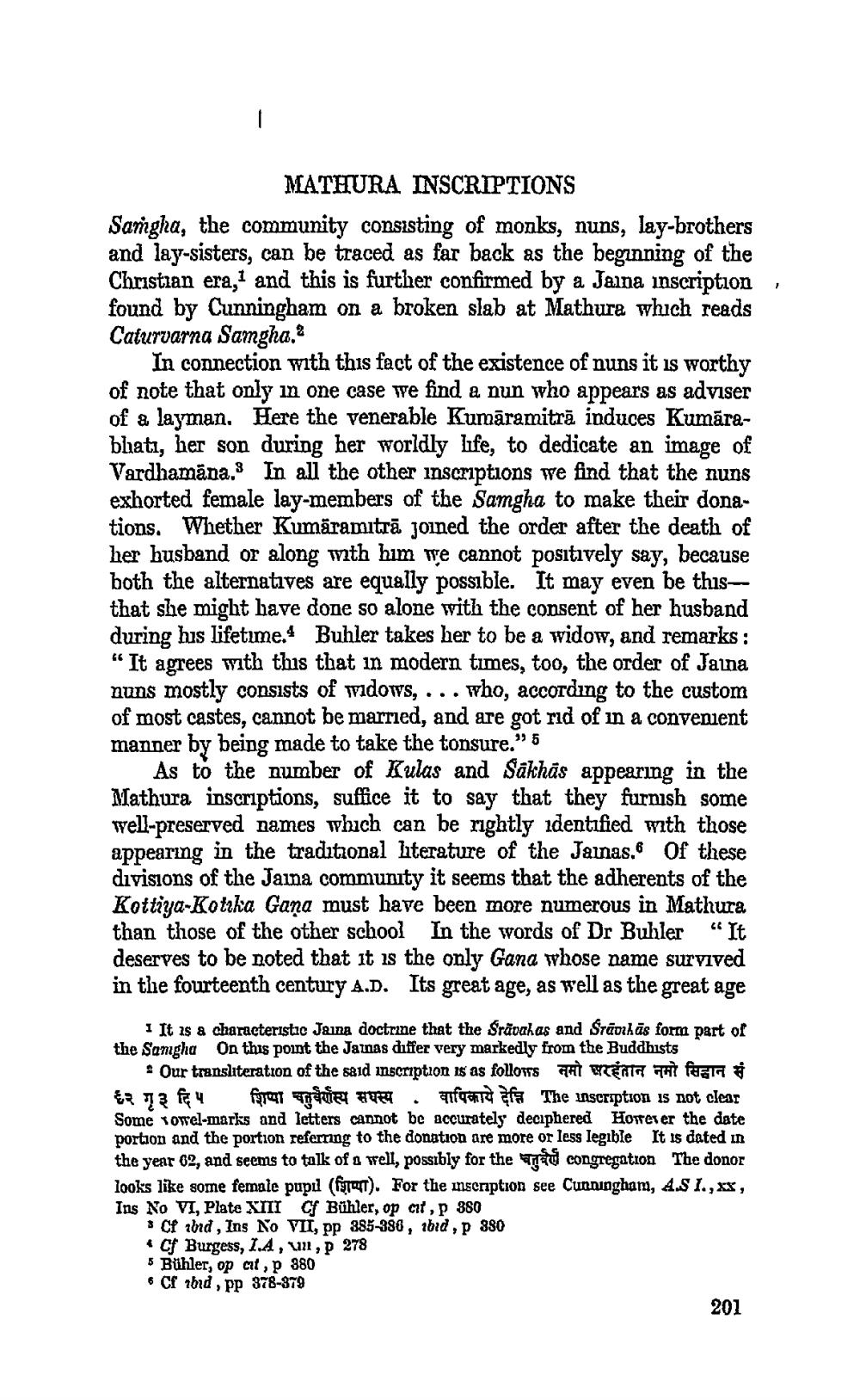________________ , MATHURA INSCRIPTIONS Sangha, the community consisting of monks, nuns, lay-brothers and lay-sisters, can be traced as far back as the beginning of the Christian era, and this is further confirmed by a Jaina inscription found by Cunningham on a broken slab at Mathura which reads Caturvarna Sangha. In connection with this fact of the existence of nuns it is worthy of note that only in one case we find a nun who appears as adviser of a layman. Here the venerable Kumaramitra induces Kumarabhati, her son during her worldly life, to dedicate an image of Vardhamana. In all the other inscriptions we find that the nuns exhorted female lay-members of the Samgha to make their donations. Whether Kumaramitra joined the order after the death of her husband or along with him he cannot positively say, because both the alternatives are equally possible. It may even be thisthat she might have done so alone with the consent of her husband during his lifetime.4 Buhler takes her to be a widow, and remarks: "It agrees with this that in modern times, too, the order of Jaina nuns mostly consists of widows, ... who, according to the custom of most castes, cannot be married, and are got rid of in a convenient manner by being made to take the tonsure." 6 As to the number of Kulas and Sakhas appearing in the Mathura inscriptions, suffice it to say that they furnish some well-preserved Dames which can be rightly identified with those appearing in the traditional Iterature of the Jainas. Of these divisions of the Jaina community it seems that the adherents of the Kottiya-Kotka Gana must have been more numerous in Mathura than those of the other school In the words of Dr Buhler "It deserves to be noted that it is the only Gana whose name survived in the fourteenth century A.D. Its great age, as well as the great age It is a characteristic Jaina doctrme that the Sravahas and STalas forma part of the Sangha On this point the Jainas differ very markedly from the Buddhists Our transliteration of the said inscription is as follows FAT WRENE T falt & 73 FM FTAT UIRU . qera fu The inscription is not clear Some vowel-marks and letters cannot be accurately deciphered However the date portion and the portion referring to the donation are more or less legible It is dated in the year 02, and seems to talk of a well, possibly for the red congregation The donor looks like some female pupu (fr). For the mscription see Cunningham, A.S 1.,xx, Ins No VI, Plate XIII C Buhler, op cit, 380 Cf ord , Ins No VII, op 385-988, ibid, p 830 of Burgess, 2.A, u , 278 5 Buhler, op cit, 880 6 Cf rbid, pp 378-379 201




